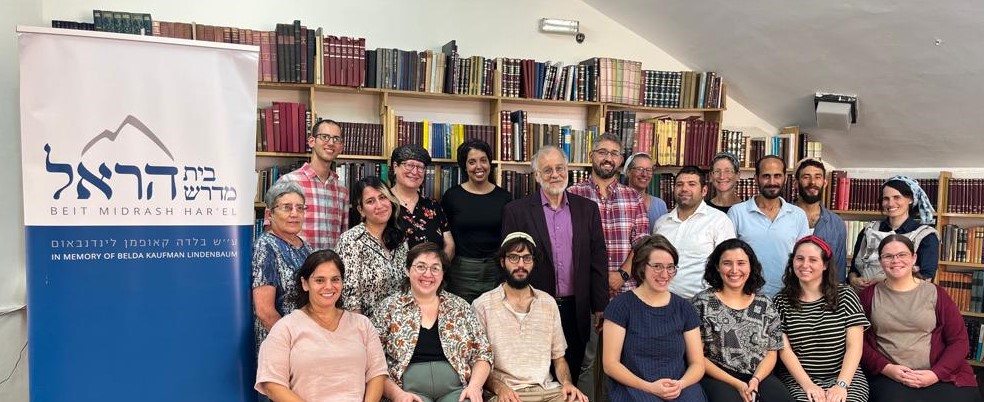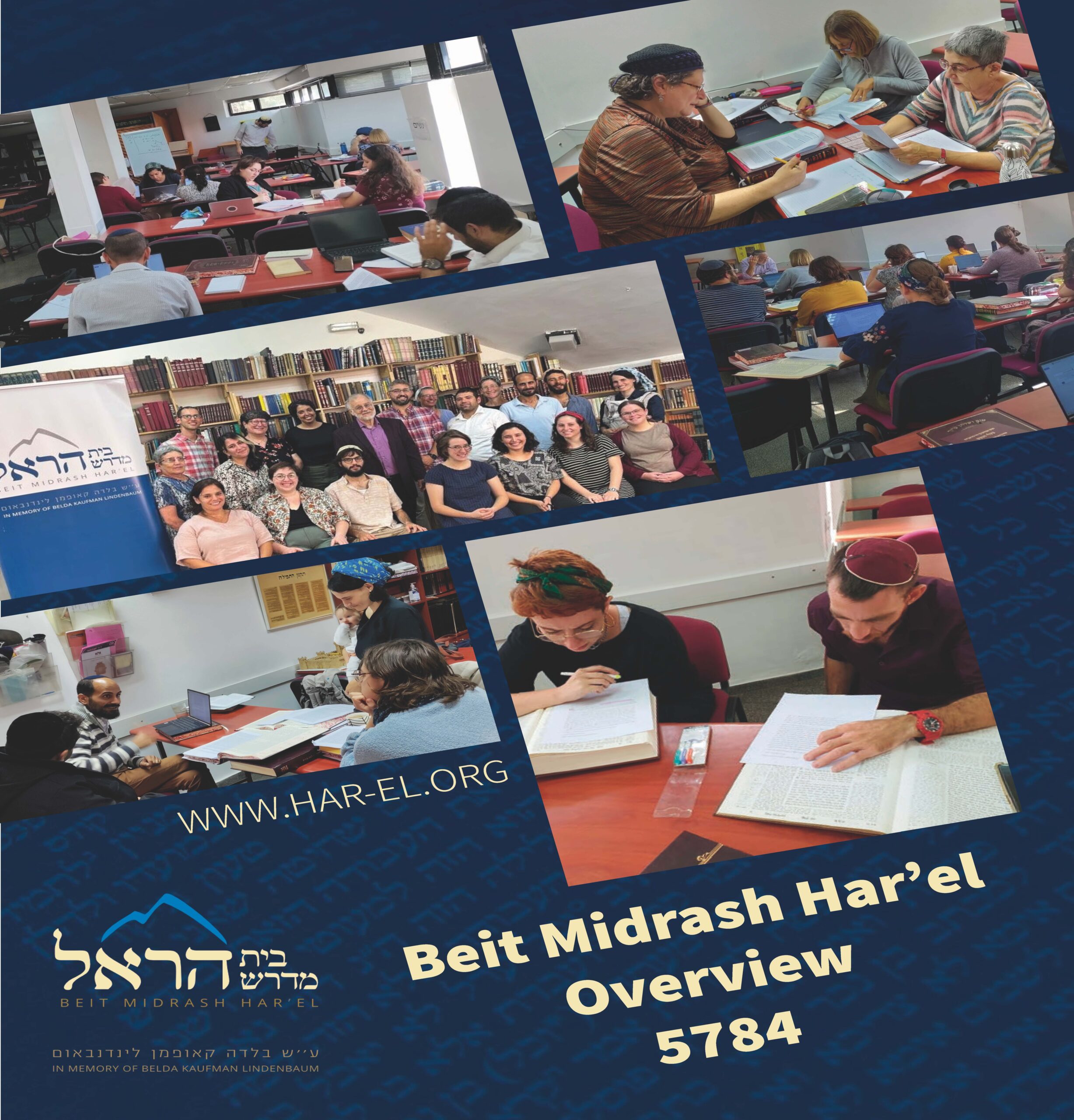by Rabbi Herzl Hefter
The post-modern era in which we live poses unprecedented challenges to the foundations upon which traditional faith is based. I wish to put forward an understanding of the Revelation at Sinai which will help us meet the challenge.
Those of us who received a conservative (lower case ‘c’) religious education were nurtured on the certainties of Jewish tradition as encapsulated by the opening words of Maimonides in his Mishneh Torah:
It is the foundation of foundations and the pillar of all wisdom to know that there is something [namely God] that existed before anything else…
The unique challenge which post-modernity poses to traditional faith does not concern particular articles of faith as such, the existence of God or the Divine origin of the Torah. Post-modernism does not so much undermine what we believe, rather how we believe. We are accustomed to thinking that our core beliefs as derived from the corpus of tradition, point in a clear way to objective metaphysical truths. This is what I mean by how we believe. Post-modernity is at odds with this way of believing. Belief systems are seen to be products of the particular civilization which spawned them. It would be the cardinal sin of post modernity to insist on the absolute superiority of the belief system of one civilization over another.
As a matter of fact, post-modernity is hostile towards any totalizing system of belief or interpretive method. Nietzsche famously disparaged the human desire to construct systems.
“The will to a system: in a philosopher, morally speaking, a subtle corruption, a disease of character; amorally speaking, his will to appear more stupid than he is… I am not bigoted enough for a system – and not even for my system.”
(See Kaufmann, Nietzsche p. 80)
The post-modern French philosopher Jean Francois Lyotard put it this way: “Simplifying to the extreme, I define post-modern as incredulity towards meta-narratives.” By meta-narratives Lyotard meant totalizing narratives such as the redemption of humanity in Christianity, the Utopianism of Marx or the triumph of science. This attitude applies equally to the narratives of the Torah along with our halachic system which mandates normative behavior.
The ramifications of the conflicting world views are very significant for the members of the modern-orthodox community. On the one hand we respect the right of the other to his or her beliefs even though they may differ fundamentally from our own. We adopt basic western democratic values such as equality of all races and between the sexes. On the other hand, in our religious lives, we hold tenaciously to the absolute truth of our own meta-narrative. We live the bifurcated existence advocated by the mid-nineteenth century Russian maskil, Judah Leib Gordon, as the Haskalah ideal: “Be a Jew in your home and a man outside it”.
J.L. Gordon’s call to divorce our Judaism from our humanity has serious, if not tragic, consequences for both. His approach engenders the psychological phenomenon of cognitive dissonance, the mental state resulting from conflict between stated beliefs and way of living. This state of affairs causes mental suffering and is unsustainable in the long term. If we venture to contemplate our situation, we are dissatisfied with our religious lives. Our children sense this, and it has become increasingly difficult to pass on our tradition to the next generation.
I propose an alternative approach which I refer to as the Theological Uncertainty Principle which will empower us to engage with a world which questions the existence of objective truths, is suspicious of authority and is skeptical of all systems of belief – while at the same time constructs a framework for belief and practice that is authentic and intellectually honest.
The Theological Uncertainty Principle
“The Theological Uncertainty Principle” emerges from the teachings of Rabbi Mordechai Yosef Leiner of Izbica (1800-1854). Let us consider the following commentary offered in his work, Mei HaShiloah on Parshat Yitro:
“I (Anokhi) am the Lord your God”. The verse does not state “Ani”, for if it stated “Ani” that would imply that the Holy One Blessed Be He revealed then the totality of His light to Israel, precluding the possibility of further delving into his words, for everything is already revealed. The letter “khaph” (of Anokhi) however, denotes that the revelation is not complete rather merely an estimation and comparison to the light which God will reveal in the future.” [R. Mordechai Yosef is referring to the Hebrew grammatical phenomenon called the Khaph ha dimayon, the khaph of comparison or approximation.]
According to R. Mordechai Yosef, then, the revelation at Sinai, the paradigm of all subsequent revelations, must be approached with great humility and comprehended as a partial and incomplete picture of the divine, merely an approximation of the divine truth.
This understanding is at odds with the traditionally held belief that the revelation at Sinai was perfect, that the Torah and how we generally interpret it, was passed down more or less complete from Moses to the Elders of Israel and so on, and that subsequent Jewish history is an effort to recapture the clarity of that pristine and intimate moment with God. Not only does the Mei HaShiloah contradict this approach, he goes so far as to assert that insisting on perfectly clear revelation is tantamount to idolatry.
“The reason that Commandment of Thou shall not make for yourself a graven image [follows the commandment of anokhi]…is because a graven image is cut according to specific dimensions, perfect, lacking nothing.…this is to teach us that nothing is revealed to man completely.”
Total comprehension of the Divine leaves no room for human development and is a distortion of the revelation. The depths of the divine reality and the divine will are infinite and must necessarily unfold over time. The perception of the revelation at Sinai as complete turns out to be but a projection of ourselves. We would be creating God in our image.
The ramifications of this alternative approach are monumental on both the meta-narrative and the individual-religious planes. On the meta-narrative level, R. Mordechai Yosef teaches us that a system with pretensions to explain everything in the most certain terms must be naïve and ignorant of the complex and constantly changing world in which we live. Our meta-narrative must embody a principle which is diametrically opposed to the very nature of meta-narratives: uncertainty. The Theological Uncertainty Principle delivers a Jewish tradition less characterized by commitment to an idealized, nostalgic memory of the past and not obsessed with reconstructing eras of perceived perfection and greater authority, but rather engaged in the constantly changing present with its infinite possibilities and surprises.
On the individual-religious plane, prior to this approach we generally equated certainty and steadfast faith as being more “religious”. In fact, the “Theological Uncertainty Principle” asserts that the exact opposite is true. Uncertainty is an essential part of the God-created spiritual topography which we inhabit. Knowledge does not require Faith. Faith can only exist where uncertainty reigns. The obstacles we overcome and the lives we live in the landscape of uncertainty is spiritually edifying; it is precisely here that we develop as devoted religious human beings.
The Theological Uncertainty Principle provides an opening for authentic humility and a more profound faith in God.
Rabbi Herzl Hefter is the founder and Rosh Beit Midrash of Beit Midrash Har’el in memory of Belda Kaufman Lindenbaum, in Jerusalem. He is a graduate of Yeshiva University where he learned under the tutelage of Rabbi Yosef Dov Soloveitchik zt”l, and received smikha from Rabbi Aharon Lichtenstein zt”l at Yeshivat Har Etzion where he studied for ten years.
(Illustration: Belief by Nick Youngson CC BY-SA 3.0 Pix4free)


